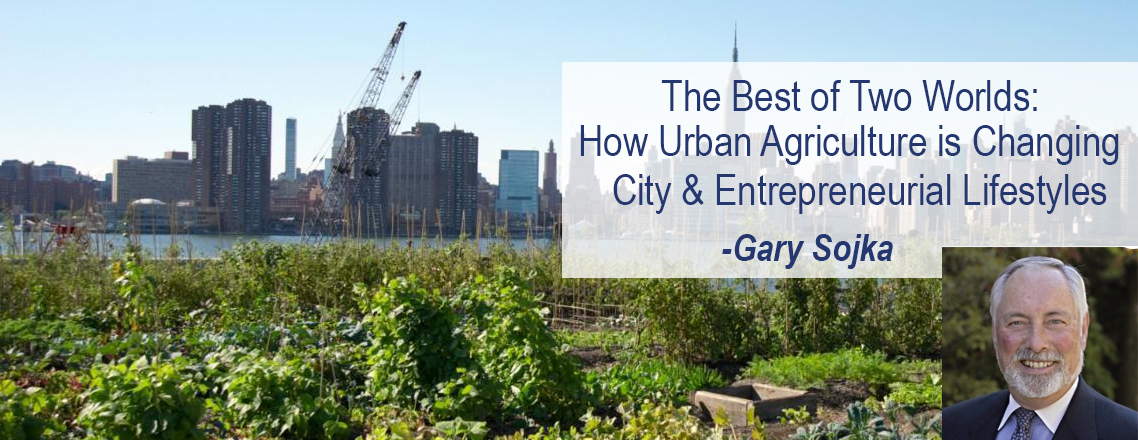
The Best of Two Worlds: How Urban Agriculture is Changing City & Entrepreneurial Lifestyles

By Gary Sojka
The world population will grow by an estimated two to three billion people by the year 2050. The vast majority of those people will be city dwellers. One of the most attractive models being proposed to deal with the problems that will ensue from such an increase is urban agriculture. Local food sales accounted for $5 billion in the U.S. alone in 2008. That number grew to $12 billion in 2014 and industry experts predict that total local sales will account for approximately $20 billion by 2019.
To date, most urban agriculture (vacant lots, parks, green roofs and vertical agriculture) has been small-scale in nature, as individuals, clubs and neighborhood organizations have provided most of the driving force. Engagement in urban agricultural activities permits an individual to work with plants (and in some cases even animals) while experiencing all the benefits of an urban life style.
Clearly, this situation appears ready-made for entrepreneurs interested in starting up an enterprise that can aid his or her community, satisfy the urge to remain close to the soil and to nature, have a positive impact on the environment and participate in an expanding field with built-in consumer demand. The growing locovore movement should fuel the demand for foods grown within sight of the consumer. The carbon footprint of such food is, of course, minimal. Seeing where your food is grown, and knowing how it was grown and by whom, is also becoming increasingly important to urban populations as evidenced by the number of city dwellers who will voluntarily drive significant distances to experience farmer’s markets, pick-your-own gardens and orchards or visit agro-touristic venues.
Some of America’s major cities, Philadelphia and Baltimore for example, are attempting to encourage urban agricultural activities in order to bring fresh, nutritious food into neighborhoods that have become virtual “food deserts.” Recognizing this trend and appreciating what it can mean to the health of individuals and communities, the U.S. Department of Agriculture (USDA) has begun a program to assist urban agriculturists start and grow their businesses. Secretary of Agriculture Tom Vissack said, “Urban agriculture helps strengthen the health and social fabric of communities while creating economic opportunities for farmers and neighborhoods… From protecting soil health to marketing to schools and grocery store chains, USDA has tools to meet the needs of this new breed of innovative urban farmer and small business owner.”
The main resource offered by the USDA to entrepreneur’s in the industry is the Urban Agriculture Toolkit, which compiles guidance from the USDA’s Know Your Farmer team and many private partners into one comprehensive resource to help small-scale producers manage all aspects of their business. It covers subjects such as maintenance of soil health, water resources, indoor vs. outdoor facilities, capital and financing, market development, infrastructure, production strategies and application for federal, state and private foundation grants. The toolkit can be accessed here.
For the city dweller looking for a start-up opportunity in a growing industry with substantial public support and a growing market, think about a pair of bib overalls, a straw hat and get your hands dirty.
Speak Your Mind